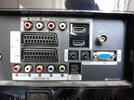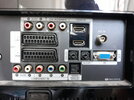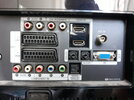When my old TV died some years ago I decided to just watch TV through my PC. Recently someone gave me a TV because they had bought a smart one. I still have the TV aerial on my roof but with only about 2 metres of cable attached, as I cut the rest off (silly me!) So I'll have to buy a length of aerial cable, coaxial I presume, to reconnect the TV. Will it be best to make a new connection at the aerial or join the new cable to the old one which is still attached to the aerial?
Will I be able to get the extra freeview channels through my aerial connection or will I need to buy a freeview box for that?
Will I be able to get the extra freeview channels through my aerial connection or will I need to buy a freeview box for that?




